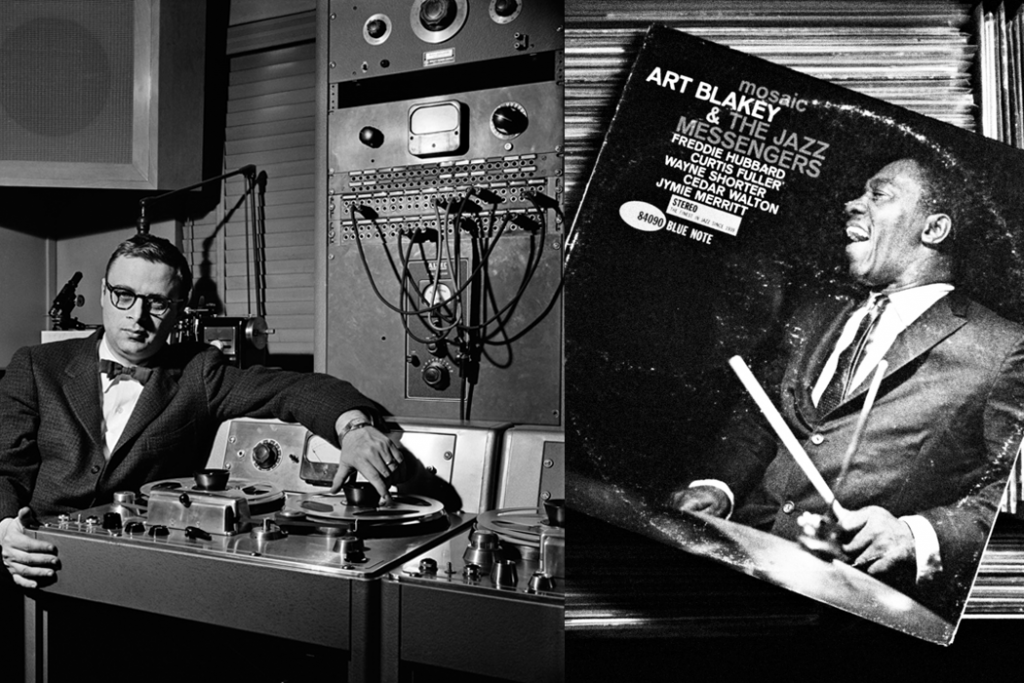If you’re anything like us, you’ve watched Rob Cantor’s absurdly operatic tale of Shia Labeouf’s cannibalism and ultimate defeat 100 times by now. Clearly, there’s so much that makes this video just next level — from the aerial ribbon dancers to the actor himself appearing at the end like a half crazed serial killer pondering his alienation from the world.
Anyway, we thought it might be fun to take a quick look musically at how Rob managed to create this absurdist piece of musical theatre.
In a bid to make the most of this (and I don’t blame him), Rob released a multitrack version of the song, which is extra awesome because you can isolate (or even remix!) the various layers. For us, it also makes it a little bit easier to see what he did musically. Let’s dive in.
Overall Song Structure
Structurally, this song is super simple — which is really important because it allows the words and narration to shine through, without touching on anything musically that would distract you from the main point: the creepy story about you being stalked by a cannibal Shia Labeouf.
In a nutshell, there are two sections: verse and chorus (or A section and B section) but they evolve as new instruments enter the song. The verse is the part with the narration, and the chorus is the part with the choir.
To craft that creepy kind of stalker feel, the verse just hangs out between C minor and G — the harmonic and rhythmic equivalent of walking. The drums and bass synch up on this walking feel as well, with the kick landing at the same moment as the bass notes. Harmonically, it feels like it’s not moving forward at all but just hanging out on one thing, that C-G bass line, with string tremolo, which is a great way to build tension — and makes it all the more epic when the group breaks the pattern and lands on the F minor chord to start the chorus.
The chorus is pretty simple harmonically — F minor, C minor, Ab diminished with a C major turnaround the first time and a G the second time. The diminished chord is what makes this progression awesome though. It’s your quintessential evil villain chord. Just play one diminished arpeggio and you will immediately recognize that sound. This chord has been used throughout the centuries to represent heightened tension and general evilness.
Toward the end (“Legendary fight with Shia Labeouf”), the song moves up a whole step (G minor) and then another whole step (A minor) to bring the whole song to another level of intensity. (Yes for whole step climbs!)
This is actually my favorite part of the song. The string parts here are totally awesome, and you should take a close listen. Rhythmically, they break from staccato to this beautiful legato melody (matched by the larger choir), and then just get super expressive. By the end, the violin and viola are seesawing back and forth in a way that totally speaks to the intensity of the moment and reminds me of the “Requiem of a Dream” soundtrack by Clint Mansell. (Yeah, can’t get much more intense than that).
The Arrangement
Musically, I think the element of this song that really grabs me most of all is the timing of all the various parts. In other words, it’s the way things are played more than what’s being played.
Even at the very beginning, the strings do this thing where they play Eb and D with tremolo and then STOP abruptly. It reminds me of a stalked animal which runs a little bit and then stops and looks up to see whether anything’s following it. (Interestingly, it also has a similar feel to the Mad Men opening credits song).
This theme of abrupt stops continues throughout. As the song builds, it becomes represented by choir and string crescendos which stop right at their height. Basically, it’s this constant stop-and-go which increases the feel of a hunt — only sustaining its volume when the actual fight is happening.
I love this motif because it actually mimics the way horror films are shot — with lots of fake-outs, tense moments that lead to nothing, and then surprises. Victim goes to the garage to get a drink on her own, unaware she’s in danger. Tension builds as she opens the fridge door, but WHAM, there’s nothing there. Then she checks the closet, and there’s nothing there either. Until suddenly, the killer is right behind her. This sort of in-and-out keeps the audience on its seat for the entire time.
How to Write a Good “Hunted Animal” Song
So maybe we can pull out a couple conclusions from Rob Cantor’s masterpiece for how to write our own horror-film-style chase song:
- Create Tension by Hanging on One or Two Notes in the Bass. Hang out on one bass note for a while — or move back and forth between the 1 and the 5 of your scale.
- Mimic a Hunted Creature Rhythmically. Use lots of rhythmic variations, particularly abrupt stops and crescendos that stop at their peak. This gives people the feeling that something’s about to happen, and then it doesn’t, putting them on edge even more.
- Use Diminished Chords. You gotta sneak that diminished arpeggio in there somewhere. It’s just so wonderfully creepy.
- Use Tremolo, Trills and Runs. I love it when the strings do an enormous run up to some new note or just let their notes quaver creepily with some tremolo. Also, the piano similar does a few climbing runs that help build the intensity.
- Take a Whole Step Up. That’s right. Toward the end, just move your entire song up a whole step. It’s a sure-fire way to build the intensity.
- Build Overall Intensity by Gradually Adding More and Increasing Volume. Add more layers as the hunt continues, so the audience expects a grand climax or finale. You can choose whether you want to give them that release or not, but by layering and building toward a crescendo, things will get more dramatic.
- Get a string quartet, choir, children’s choir, aerial dancers and of course Shia Labeouf. OK, this might be a little tough, but MIDI can do a lot these days…
Do you have any other tips or recommendations based on this song? We’d love to hear ’em!

